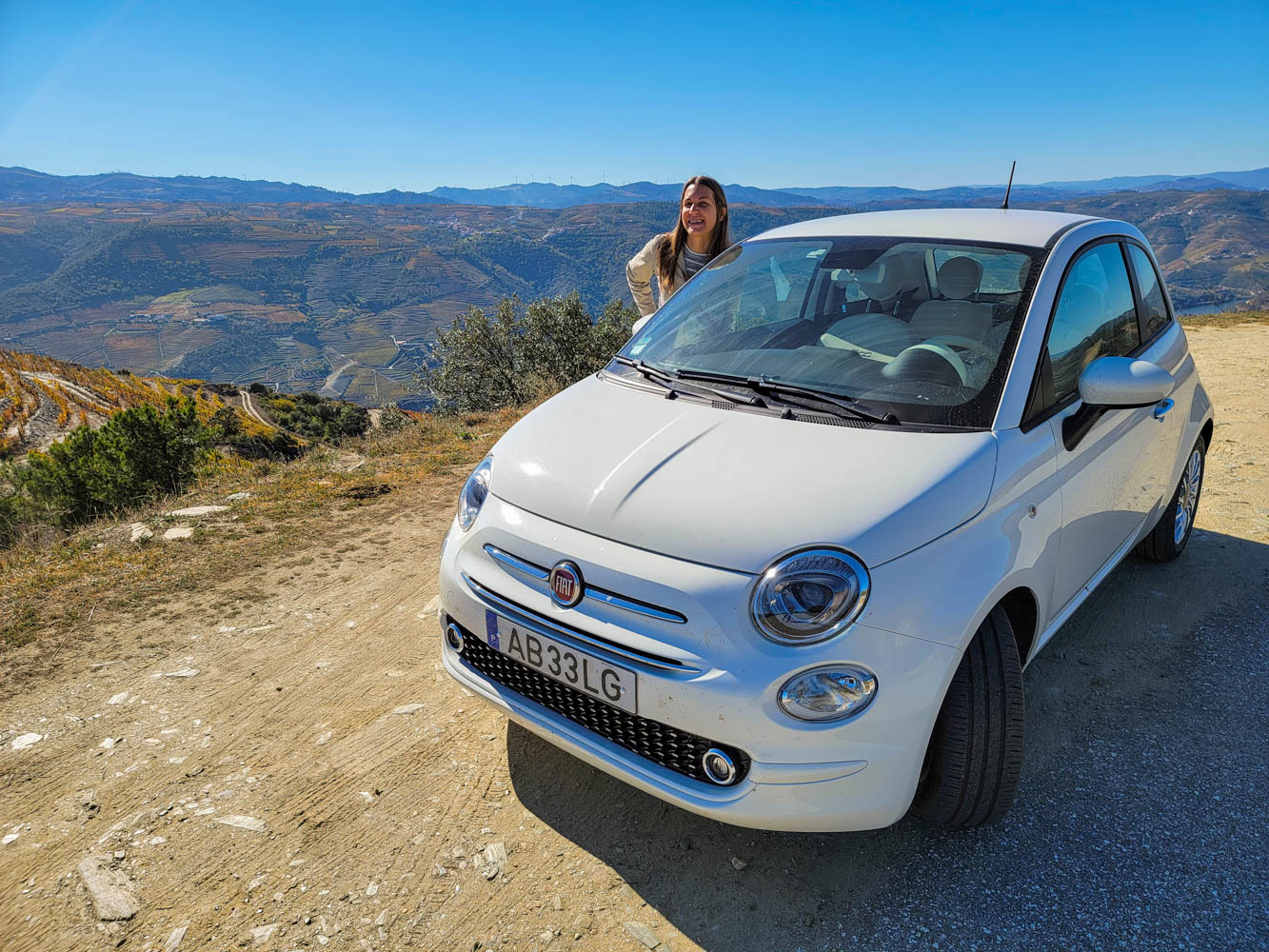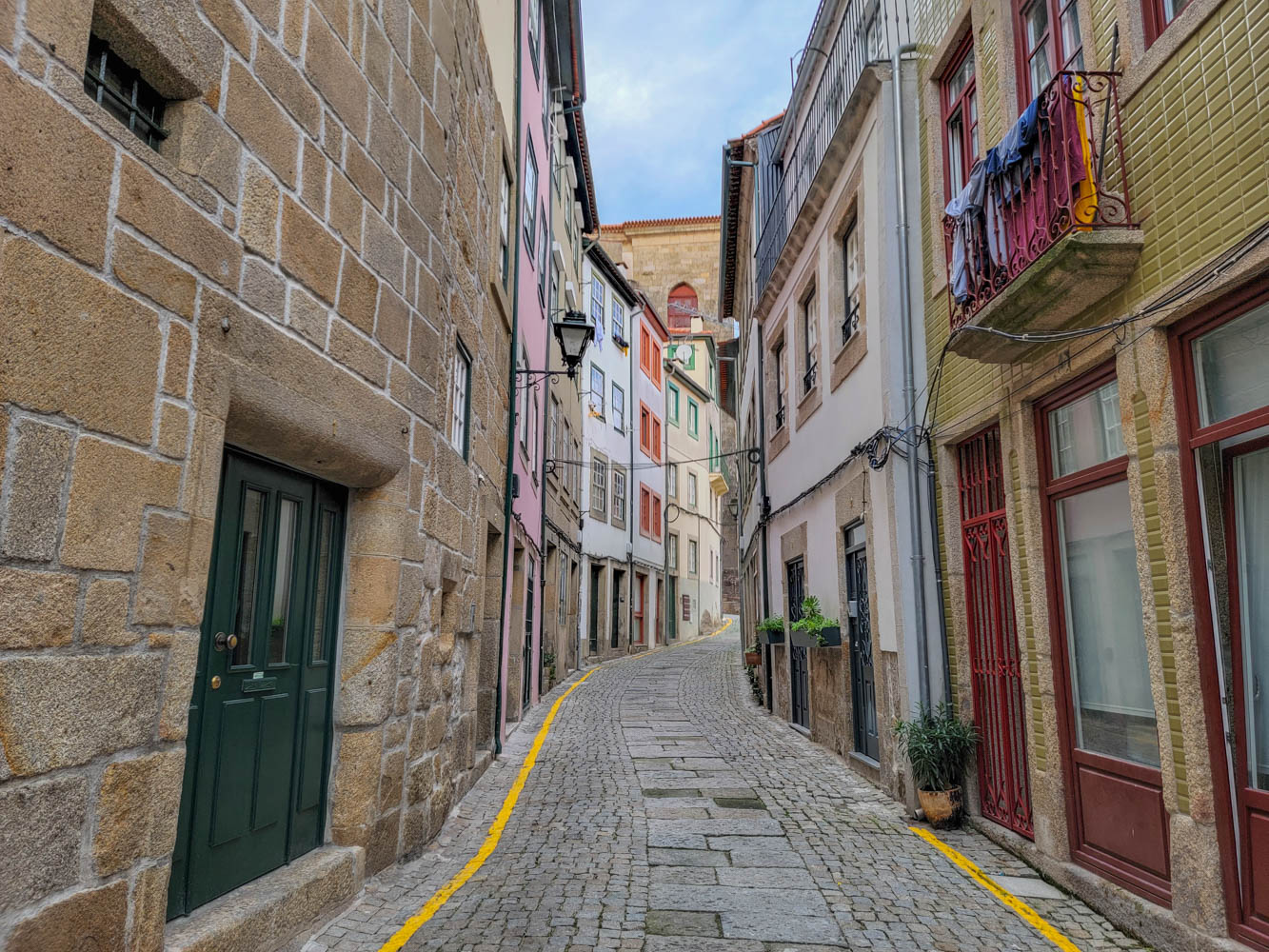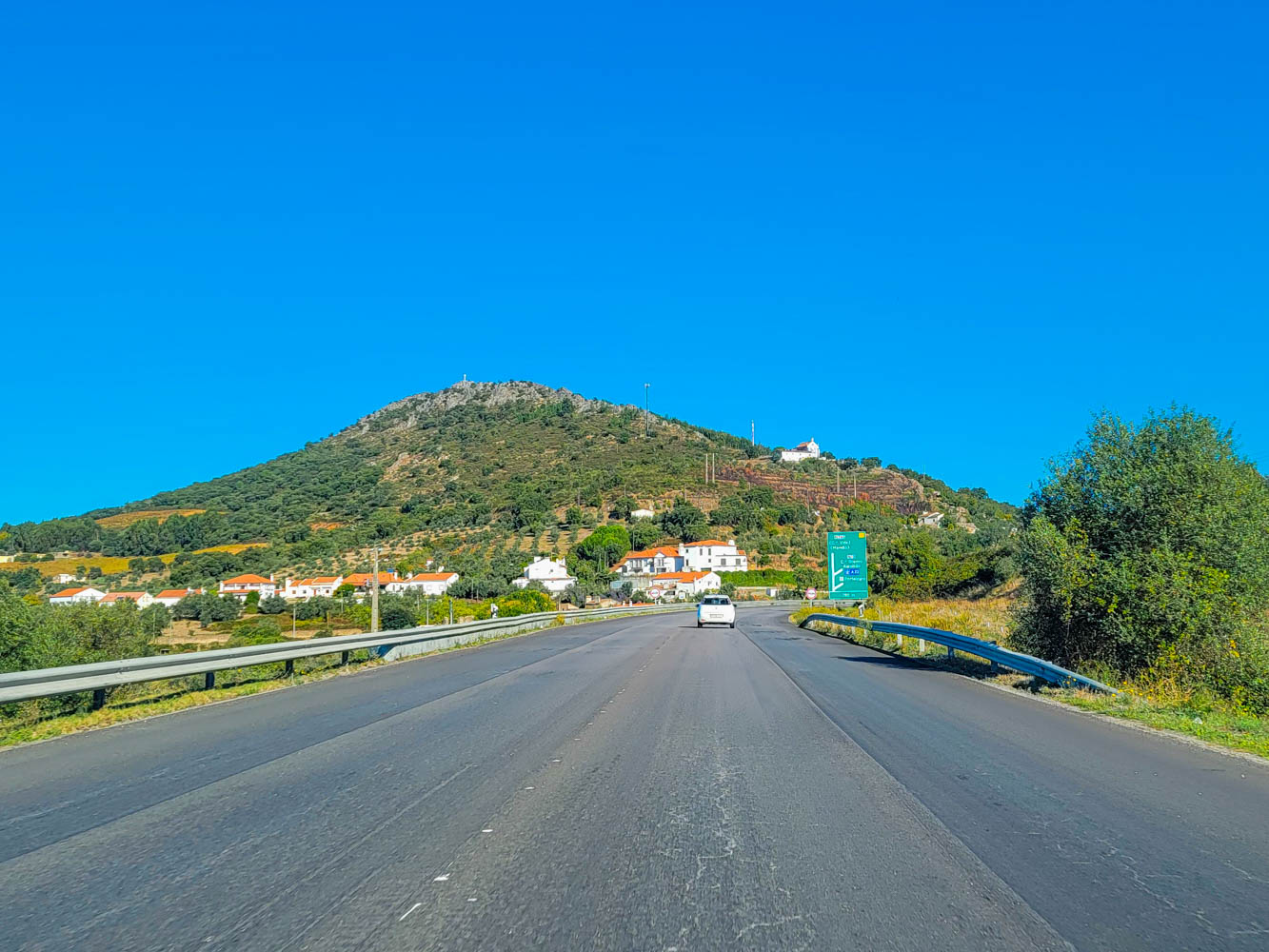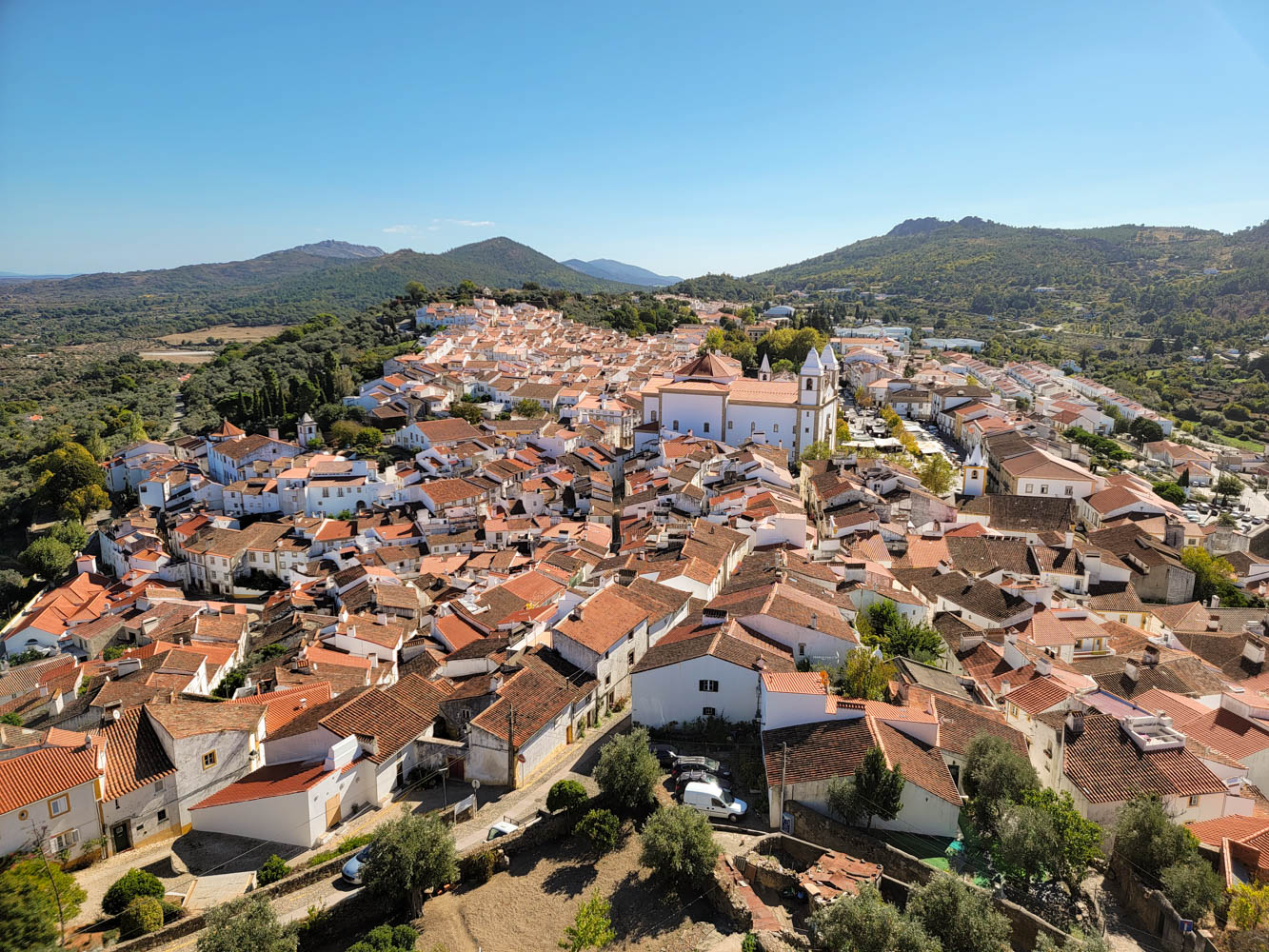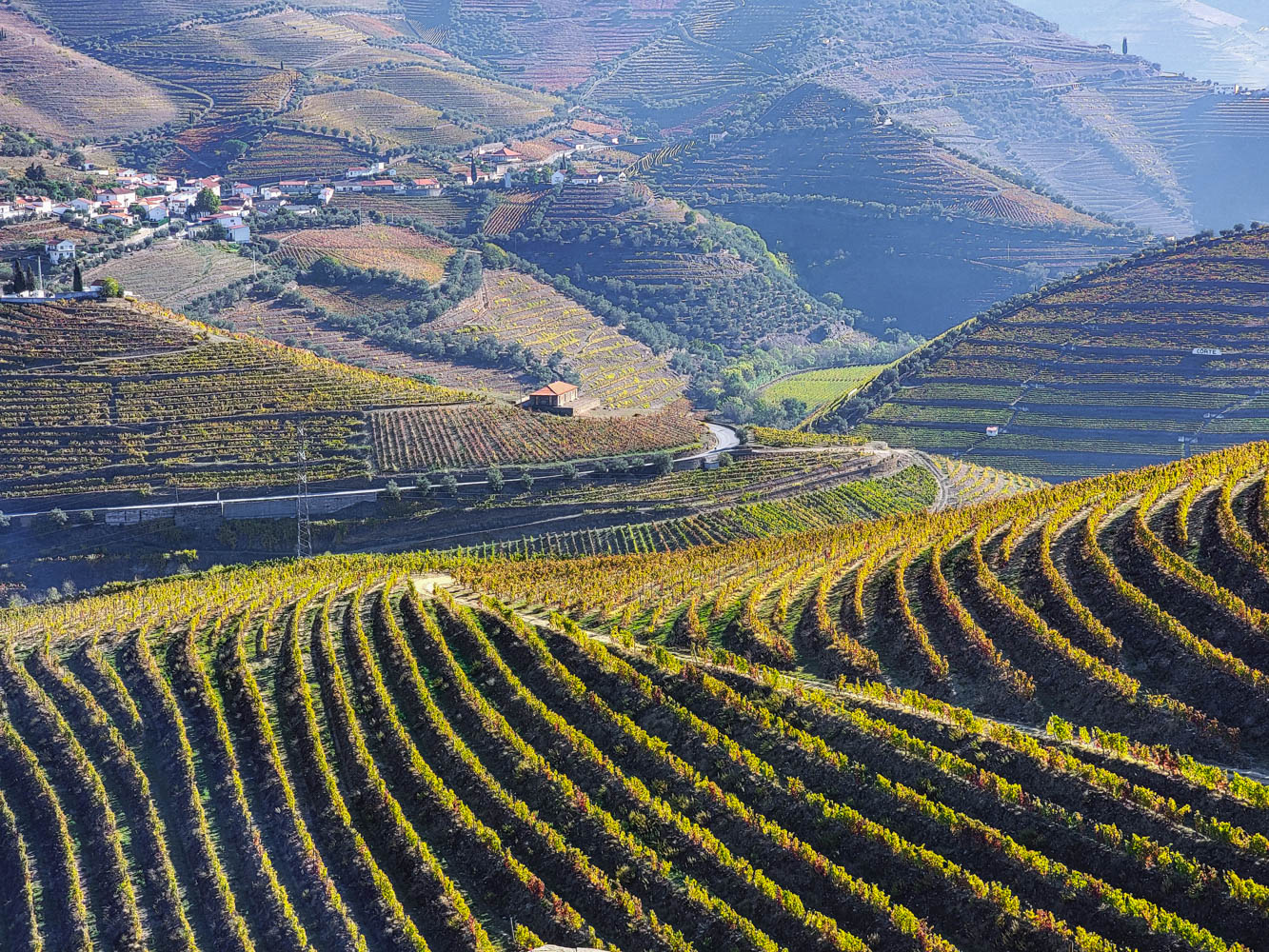Published by Jeremy. Last Updated on January 12, 2023.
Disclaimers: Our site uses demographic data, email opt-ins, display advertising, and affiliate links. Please check out our Terms and Conditions for more information. Listed prices and attraction details may have changed since our visit and initial publication.
When we decided to visit Portugal, we knew we would rent a car to drive around the country to explore as much as possible. We went into it assuming that driving in Portugal would be a lot like in other European countries we’ve driven in, like Italy and Iceland- that is to say, crazy at worst or covered with speed cameras at best.
As it turns out, driving in Portugal was incredibly easy, and apart from a few key issues worth highlighting we really had no problems at all. In this one, we thought we’d share more about what you can expect when picking up a car to explore here!
✈️ Book Your Next Trip
- • Planning a trip? Find a flight deal.
- • In need of a room? Check out hotel and apartment prices.
- • Taking a cruise? Find a cruise itinerary for your journey.
- • Don't overlook picking up a rental car or day tours as well!
Driving in Portugal is Not That Bad
For the most part, driving in Portugal really is a breeze. Now, we’ve heard from other travelers while in the country that they hate the idea of driving in Portugal, but honestly, the opinions we heard were quite unfounded.
The reason for this is because Portugal’s roads are by and large fairly easy to navigate. The highways are exceptionally well-maintained, signage is plentiful, and outside of major cities, you’ll likely encounter 20 roundabouts for every one stoplight. While local drivers do tend to speed a fair bit over the limit at times, for the most part, we felt drivers weren’t overly aggressive and this came together for an easy and, dare we say, enjoyable driving experience 99% of the time.
That being said, Portugal is a European country, and conventional European rules apply here as well.
That is to say, major cities can be quite chaotic (we opted not to drive in Lisbon and Porto and think that was a good decision), gas is expensive (1.8 Euro/liter when we were there), rural roads can be rocky gravel and have some serious potholes, and of course, tiny villages have those wonderfully narrow streets that anything larger than a Fiat may struggle with.
But to be honest, the only bad roads we encountered were in the Douro Valley (more on that below) and when visiting some of the megaliths near Evora– that’s it! Everything else was truly a breeze.
I do not view any of these issues as being unique to Portugal as you can encounter those virtually everywhere in Europe, but it is worth highlighting that these are truly the most challenging parts of driving in the country. If you plan accordingly, such as avoiding driving in major cities entirely and parking outside old town walls, you’ll make your life that much easier when it comes to driving in Portugal.
Beyond that, we do have a few specific topics we want to dive into more in this one. So, first up we move on to one of the most important questions you may have: parking!
Parking in Portugal’s Towns and Cities
During our travels around Portugal, we drove through towns like Faro, Marvao, Castelo de Vide, Manteigas, Viseu, Monsaraz, Evora, the Douro Valley, and Gaia (Porto).
With all of those stops, we paid a grand total of 1 Euro 90 in parking fees. Yes, that’s it. This was in Faro, arguably one of the larger cities we visited during our stay, and the only reason we had to pay at a meter (coins only) was that the free parking lot in town was being used by a pop-up Carnival. Had we visited on a different week, odds are good we would’ve made it through Portugal not spending any money on parking at all.
Suffice it to say, outside of the biggest cities, like Porto and Lisbon, most every town we visited in Portugal had some form of free parking available for visitors. Some of these were lots just outside the old town walls (Marvao). Others were non-metered streets a kilometer away from the town center (Viseu). A few still were simply that our hotel had free parking such that strategic hotel bookings saved us some money (Douro, Evora, and Gaia).
The only real challenge of any of the places we visited was Viseu, if only because our hotel told us street parking was available at the hotel (it wasn’t) and they were not very helpful at telling us where to park when we called for help. After driving around a bit, we found non-metered parking and walked about 10 minutes into the city to reach our room. But overall, outside of major cities, odds are good you’ll get by with a lot of free parking when exploring. A bit of research will go a long way here.
Tolls in Portugal are a Big Consideration
While parking is easy in Portugal, tolls, on the other hand, most certainly are not. The country has two kinds of toll roads you’ll drive on, denoted manual and electronic tolls.
Manual tolls are a lot like you may know elsewhere, you get a ticket as you get on and pay at your exit. These are generally the major highways that run north-south. Electronic tolls are where the absurdity begins. These are on paid highways that have too many exits to justify staffing at toll booths (Portugal is moving away from staffed tolls in general, too). Instead, cameras and radar guns are mounted overhead to take your car’s information for a flat rate toll at various intervals- roughly every 5-20 kilometers. To pay, you have to go to a post office, Multibanco, or another selected site between 48 hours and 5 days later for every single toll.
- Please read the current toll rules before traveling to Portugal. This should be considered anecdotal at best based on our own experiences and observations.
If this sounds like a chore, it’s because it is. Everything we read about paying tolls manually came to the same conclusion- the experience is awful (mostly because you have such a limited window to pay such that you’ll have to do it over and over again throughout a trip). All of these sources go on to recommend paying for a toll transponder to use both roads at your leisure. This is exactly what we did- or at least tried to do.
Our car came with a Via Verde toll transponder which is, as far as we are aware, a universal, pre-loaded transponder that is not unlike an EZ-Pass for those who drive in the USA. It theoretically works on both manual and electronic toll roads, and once activated your rental company will simply bill you a nominal daily rate for use (we heard about 2 Euro per day from our company) plus the final toll bill at the end.
When you are on the manual roads, you’ll see dedicated Via Verde lanes (via the logo found on the transponder) that you can simply drive through. When you get off the highway, the LED screen at the toll exit will flash what the fee was that is charged to the transponder. When you drive on manual roads, however, our transponder simply beeped to let us know that the fee was assessed.
The good news is that tolls in Portugal are cheap. Our rough math came up to about 0.10 Euro cents per kilometer. Lisbon to Algarve ran us about 33 Euro, and Porto to Lisbon was about 22 Euro. The electronic tolls were about 0.50 to 2.00 every 5 to 20 km respectively. This didn’t seem to be a set toll rate, but it averaged out close enough for planning purposes. Overall, we traveled all over the country and likely didn’t even break 100 Euro in total tolls- not bad at all.
But we did have one major snag worth mentioning- our car rental company never activated our transponder on our account despite me asking for it several times when picking up the car. There was no displayed activity registered to my profile when we returned the vehicle at all. So we spent two weeks driving around Portugal racking up about 80 Euro in tolls on a transponder that our return agent had no record of. We’ll see who invoices that to me, when, and what fines will be attached because I’m sure this will be a fun conversation later on if only because I explicitly asked for the transponder several times when taking the car out.
This, coupled with a few other issues we had with the rental car company, was really the only bad taste we had on the entire trip. But as they are in the process of fixing all of their own mistakes, I’m not going to name and shame here just yet- the agents who returned our car were amazing and it wouldn’t be fair to them to elaborate further (assuming things do, indeed, get fixed). Suffice it to say, make sure you have your sales agent clearly explain how the tolls and transponder work (including any rental fees) because there really is a lot to take in. But even from our slightly tainted experience, a Via Verde transponder seems like the best option all around.
Speed Cameras Only Seem Near Major Cities and Few No Driving Zones
Perhaps one of our very favorite parts about driving around Portugal is that we saw only a few speed cameras and even fewer no-driving zones (like the universally hated ZTL zones of Italy which are simply terrible).
On the speed camera front, we noted about six in total on the outskirts of Lisbon and Porto respectively. These were incredibly well-marked, easy to see when driving, and in some cases included big LED signage just before them warning you to slow down one more time (not to mention, they were also highlighted on Google Maps). You really have no excuse to miss these, and the fact that we only saw them close to the biggest of cities made for an even better driving experience all around.
The no-driving zones, on the other hand, were only really found in the center of the old towns everywhere we went, if there were any at all, and were incredibly simple to follow.
In walled mountain towns, you may see a sign that says only approved vehicles may pass the old town gate (note: signs are in Portuguese but fairly easy to follow). Here, only locals and those staying at hotels with driving permission can enter, but everyone else should not. Park outside the walls, walk-in, and you’re good to go. In other areas, a retracting barrier may be present that physically limits drivers from entering at all unless they have a keycard for entry. This was especially common near major tourist walking areas where only delivery trucks were allowed entry. Thankfully, Google Maps doesn’t try taking you on any of these roads, so it should be a non-issue here, too.
In fact, in two weeks of driving around Portugal I really only had to stop and think about the no driving zones maybe twice, and both of those were when we reached an old town gate and decided to park outside it. Did we have a small sampling of roads? Of course. But we didn’t feel like the country had all the hassles like other places we’ve visited. You’ll just want to know what no entry signs look like and should be good to go on this front.
The Douro Valley is a Special Category Worth Discussing
And now for the Douro Valley. Oh boy. We spent three days driving in the Douro Valley and have so much to say on this topic we are publishing another article about why you may want to take a guided tour there instead. To put it bluntly, you need nerves of steel and a whole lot of luck when driving here- especially if you visit around harvest when so many monster trucks are on the roads as well (thankfully they were gone come October).
The reason for this is that the Douro is huge- both in area and in height. Think almost 2,000 foot+ hills, one-lane gravel roads used for two-way traffic (remember the tanker trucks), no lights at night, and drop-offs just inches away that would result in a tumble about 15 feet down to the next terrace. Oh, you will also likely be drinking 18-22% port at wine tastings too, and Portugal’s drunk driving laws are fairly strict as well.
We didn’t do ourselves any favors by staying outside of Pinhao (one of the major towns) and booking an incredibly remote Quinta for our stay. Our particular hotel was located about 20 minutes off the main road and had our most harrowing drive in the Douro outright- and we had to do it six times including twice at night! Thankfully, most (but not all) of the wineries are located just off the main roads, not nearly as far as our hotel was, so if you plan your accommodation accordingly you can minimize (but not eliminate) your drive time on the craziest roads in the area. It is still going to be stressful driving, but perhaps just a bit less so, and is something we will 100% be doing on a return trip.
In fact, I will almost go as far as saying I preferred driving in the Douro Valley at night despite there being no lights virtually anywhere. Part of this is because virtually no cars were out, and when they were you could see them coming from far away as their car lights carried an absurd distance (this is in contrast to driving in the daylight where you can’t even tell if a car is coming around a tight one-lane switchback). Likewise, at night I couldn’t see any of the dropoffs just inches away from my car, and very much kept it out of sight, out of mind.
So while we would emphatically say you must go to the Douro when in Portugal, you may also want to consider exploring there on a Douro Valley wine tour or being exceptionally strategic in where you stay- that remote Quinta off the main road may look charming but just keep in mind what it entails to actually reach it- likely a fair bit of insanity, if we are to be honest.
Overall, apart from a few minor annoyances when driving in Portugal (most having to do with our rental car company’s screwups), we were really pleased with how easy it was driving around. We found Portugal to be one of the easiest countries in Europe to drive in, the Douro Valley notwithstanding, and we’d pick up a car here time and time again to go exploring.
Have you driven around Portugal before? Comment below to share your thoughts!
Need a rental car for exploring Portugal? Click here for a quote!
About Jeremy

About the Author: Jeremy is a full-time travel writer based in Pittsburgh and primary author of this site. He has been to 70+ countries on five continents and seeks out new food, adventure activities, and off-the-beaten-path experiences wherever he travels.
